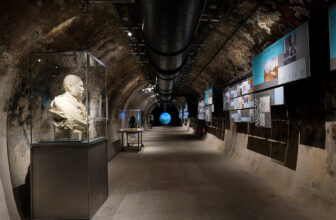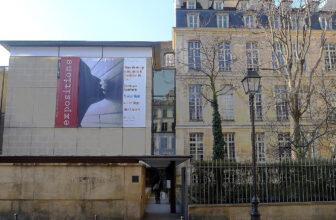
What is Inside The National Museum of Natural History Paris?
The National Museum of Natural History in France, or the “Muséum national d’Histoire naturelle” as it is known in French, is a storied institution located in the heart of Paris. Founded in 1793 during the French Revolution, this esteemed museum is a treasure trove of knowledge, housing not only natural history specimens but also numerous artistic representations that bring the natural world to life. While its primary focus is scientific, the museum boasts an impressive array of art that serves both educational and aesthetic purposes.
The Intersection of Art and Science
Art and science have long been intertwined, particularly in institutions like the National Museum of Natural History. Artists have played a crucial role in documenting and interpreting the natural world, often providing visual aids for scientific research and education. At the National Museum of Natural History, this synergy is evident in its vast collection of botanical illustrations, zoological drawings, dioramas, sculptures, and architectural features.
Highlights of the Museum’s Artistic Collections
- Botanical Illustrations The museum houses an exceptional collection of botanical illustrations, many of which date back to the 18th and 19th centuries. These detailed and colorful works were created by artists working alongside botanists to document the vast diversity of plant species. Notable among these is the work of Pierre-Joseph Redouté, often referred to as the “Raphael of Flowers.” His exquisite watercolors of roses, lilies, and other flora are celebrated for their accuracy and beauty.
- Zoological Drawings and Paintings The museum’s collection includes meticulous zoological illustrations that have been used for centuries to study and classify animal species. These works capture the intricate details of animals’ anatomy, behavior, and habitats. Artists like Nicolas Maréchal contributed extensively to this genre, creating lifelike depictions of mammals, birds, and insects.
- Dioramas One of the most visually captivating aspects of the museum is its series of dioramas. These three-dimensional displays combine taxidermy specimens with painted backgrounds and crafted landscapes to recreate natural habitats. The dioramas are not only scientific tools but also artistic masterpieces that evoke a sense of wonder and immersion.
- Sculptures Sculptures are another prominent feature of the museum. The Gallery of Paleontology and Comparative Anatomy, for instance, is adorned with sculpted representations of prehistoric creatures and anatomical models. These sculptures serve as both educational tools and artistic expressions of humanity’s fascination with the ancient world.
- The Architecture The museum itself is an architectural marvel. The Grand Gallery of Evolution, a centerpiece of the institution, features stunning design elements, including large murals and intricate carvings that depict the diversity of life on Earth. The interplay of light, space, and art in this gallery creates an awe-inspiring atmosphere that enhances the visitor experience.
Notable Artworks and Installations
- The Ceiling Frescoes of the Grand Gallery of Evolution The ceiling of this iconic gallery is adorned with elaborate frescoes that symbolize the interconnectedness of life. The artwork complements the scientific exhibits, providing a profound visual narrative about the evolution of life on Earth.
- Taxidermy as Art While taxidermy is primarily a scientific endeavor, the specimens displayed in the museum are often arranged in artistic compositions. For example, the display of African fauna in the Grand Gallery of Evolution is curated to evoke the grandeur and beauty of the savanna.
- Historic Naturalist Sketches The museum preserves sketches and notebooks from historic naturalists such as Georges Cuvier and Étienne Geoffroy Saint-Hilaire. These works offer a glimpse into the artistic process of documenting scientific discoveries.
Temporary Exhibitions
The museum frequently hosts temporary exhibitions that explore the relationship between art and nature. These exhibitions often feature contemporary artists who draw inspiration from the natural world, bridging the gap between historical collections and modern artistic expression.
The Role of Art in the Museum
The art within the National Museum of Natural History serves multiple purposes. It educates visitors by providing visual context to complex scientific concepts. It inspires awe and curiosity, encouraging a deeper appreciation for the natural world. Finally, it preserves the legacy of the artists and scientists who have contributed to our understanding of life on Earth.
Visiting the Museum
A visit to the National Museum of Natural History is not only an educational journey but also an aesthetic one. From the delicate strokes of botanical illustrations to the grandeur of architectural design, art permeates every corner of this iconic institution. For art lovers and science enthusiasts alike, the museum offers a unique opportunity to explore the beauty and complexity of nature through the lens of artistic expression.
The National Museum of Natural History in France is a repository of scientific knowledge; it is a celebration of the profound connection between art and science. Its collections and exhibits demonstrate that art is an essential tool for understanding and appreciating the natural world, making it a must-visit destination for anyone interested in the intersection of these two disciplines.





